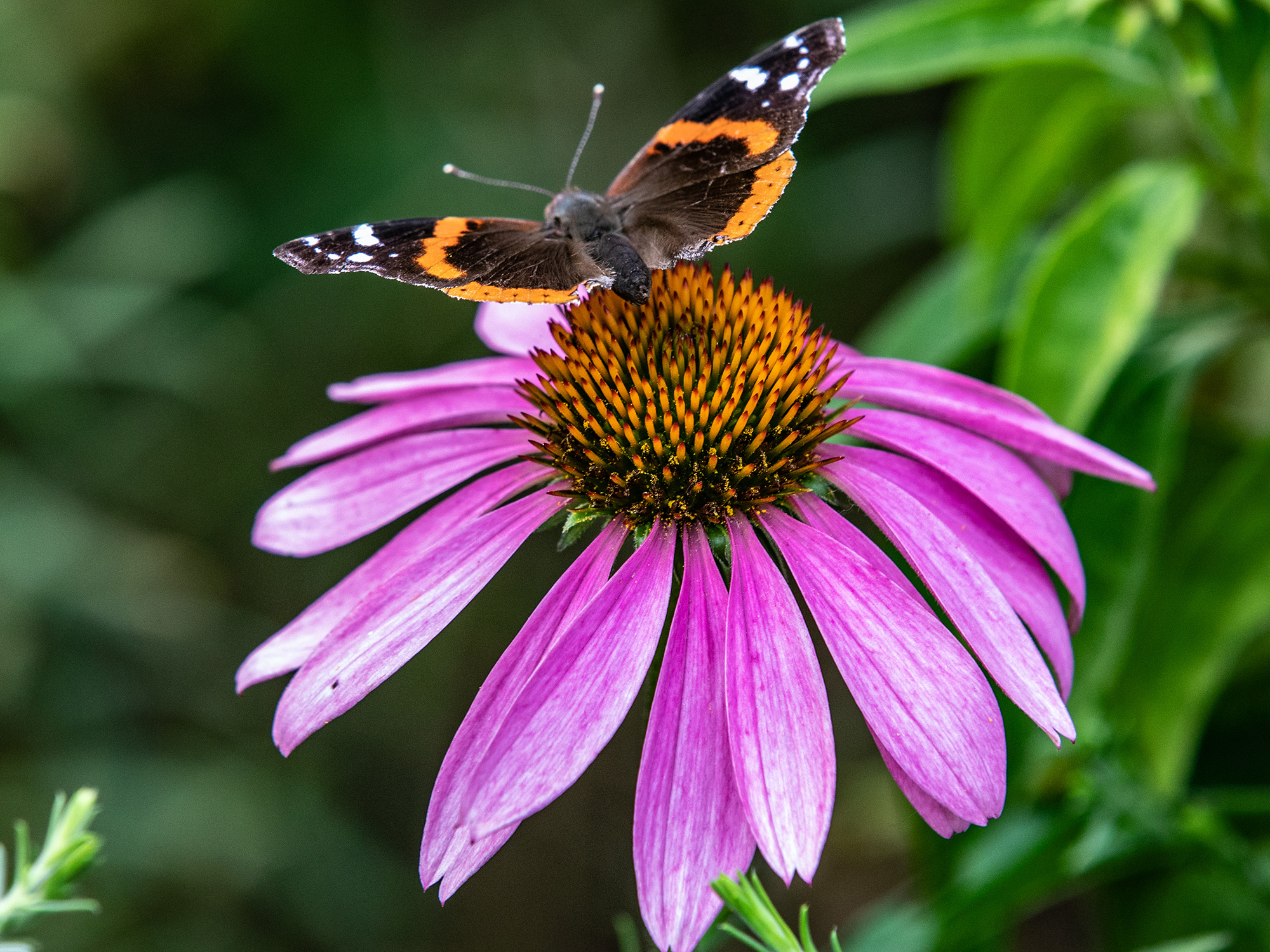5 ways you can improve water quality from home

(Photo by Tom Reiter)
Whether urban, suburban or rural, our homes and yards are part of the Mississippi watershed. The effects of how we steward the places we live show up far beyond our property lines. Dig into these tips from our 30 ways to help the river series to help protect the river right from your yard.
1. Plant native plants
To endure Minnesota’s hot summers and deep-freeze winters, prairie grasses like big bluestem grow roots down 8 feet to reach nutrients and water. These deep roots hold soil in place and allow the earth to absorb far more rain than a turfgrass lawn can. Plus, birds, bees and other critters that live here depend on native plants for habitat.
Unsure where to start with native plantings? Visit our resources page.
2. Reduce fertilizer use and leave the leaves
Pesticides and herbicides that keep turfgrass weed-free can be toxic to people and wildlife. Lawn chemicals account for the majority of reported wildlife poisonings to the Environmental Protection Agency.
To reduce lawn chemical usage in problem areas, try to find the root cause. The actual roots of your plants may live in poor soil. Aerate your lawn once a year to break up the soil so nutrients and water more easily reach roots. Mulch your leaves or "leave the leaves" in place in the fall. Amend your soil with a thin layer of rich compost. You could also replace some of your lawn with native plants to make a garden that doesn’t need as much chemical assistance to flourish.
3. Rig up a rain barrel
Rain barrels collect the rain that runs off your roof and slides down your gutters so you can use it later to water your garden or lawn. But rain barrels do more than conserve water. They also prevent runoff and the pollution it carries from entering already-taxed stormwater systems.
Make your own or join us at one of our make-and-take rain barrel classes. Learn more on our rain barrels page.
4. Prevent runoff
Thanks to climate change, when it rains it pours, causing stormwater system overflows. That means pollution discharges into the river. You can help by keeping rain where it lands. One easy way is to cut your lawn to 3 inches or more. The higher the lawn, the deeper its roots. And the deeper its roots, the more absorptive the ground.
Leaving lawn clippings in place also encourages richer, more absorbent soils. Finally, reroute your downspouts away from pavement and into grass, a rain barrel or rain garden.
5. Use less deicing salt in winter
Road crews often use salt to melt ice on streets and highways, but such deicers are the primary source of chloride in Minnesota’s waters. Just 1 teaspoon of salt can permanently pollute 5 gallons of water.
Use these tips to keep your walkways, driveway and the river safe:
- Shovel early and often to keep ice from forming in the first place.
- Don't overapply: One coffee mug-full is enough for 10 sidewalk squares or a 20' driveway. One salt grain melts a 3" circle of ice.
- Sweep up excess salt and leftover salt after it's melted ice and before it enters a storm drain.
- Only apply salt when it's above 15 degrees since most salts lose their melting power below this temp. In the bitter cold, turn to an alternative deicer or try sand for traction.
30 ways you can protect the river
Looking to take action and make changes for the river you love?
We've rounded up 30 ways to get started.